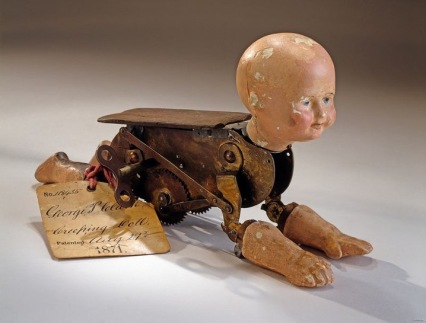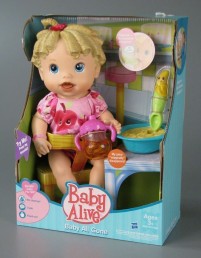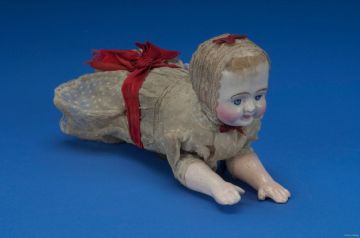
It’s October, the month of spooky, so I figured I would share this creepy patent model. I am always fascinated by the objects in the Smithsonian collections and I love how the objects represent us so completely as Americans.
The Smithsonian wrote about this Creeping Baby Patent Model in 2013 in a blog post, 11 Collection Objects Giving Us the Creeps This Halloween. This is the model that accompanied George Pemberton Clarke’s 1871 patent application for his “Natural Creeping Baby Doll.” The doll rolls along with two toothed wheels in a clockwork motion. The body is made of plaster.
Here is the commercial version of the doll that sold a few years later.
This is one of those objects I like to use in units on changes over time. There is evidence of dolls dating back to ancient times in Greece, Egypt, and Rome. It’s very easy for smaller students to create an object time line with visuals, comparing and contrasting the dolls and their price tags. Now we have dolls that do so much more and entire industries built around them like Mattel, American Girl, and Cabbage Patch.

Students can make small collections of dolls in the classroom by material, physical features, or size. Older students can create dolls or human likenesses that are movable . They can also take apart dolls to learn about the mechanisms that make them move. Students can compare different types of dolls,looking at everything from paper dolls to ritual dolls and corn husk dolls. It’s also important to bring up that many of these early dolls were originally created as educational tools not just playthings.
Toys are some of the most engaging objects for younger students and there is so much to be learned from them.
